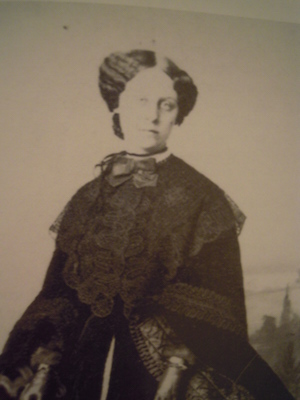Louisa “Lulu” Matilda Jacobs, teacher, equal rights activist, and entrepreneur, was born a slave in Edenton, North Carolina, on October 19, 1833. She was the daughter of congressman and newspaper editor Samuel Tredwell Sawyer and his mixed-race enslaved mistress Harriet Jacobs.
Louisa Jacobs was educated in private schools in New York City, New York, and Boston, Massachusetts, and trained as a teacher. From 1852 to 1854, she alternated living with the white abolitionist Zenas Brockett family, who operated an Underground Railroad station in Manheim, western New York State, and assisting her mother at the Hudson River home of Home Journal editor Nathaniel Parker Willis. From 1856 to 1858, Jacobs lived with the family of Willis’s sister, author and journalist Fanny Fern and her husband, biographer James Parton. Fanny Fern’s abusive rages and unfounded accusations of impropriety with Parton culminated in her attempt to physically attack Jacobs in the spring of 1858. Jacobs left the Parton’s New York household abruptly and moved back to Boston where she remained through the early 1860s.
After founding a Freedman’s school in Alexandria, Virginia, during the Civil War, Jacobs joined Charles Lenox Remond and Susan B. Anthony in early 1867 on an Equal Rights Association lecture tour in western New York State. In 1868 Jacobs and her mother sailed to England to raise funds for a home for women and children in Savannah, Georgia, and on their return to the United States, Jacobs taught at the Stevens School in Washington, D.C. During the early 1870s, Jacobs and her mother ran a boarding house in Cambridge, Massachusetts, which catered to Harvard faculty and students.
In late 1879, Jacobs and her mother moved to Washington, D.C., and operated another boarding house patronized by Governor William Claflin and Senator Henry L. Dawes of Massachusetts. For at least two summers (1882 and 1883), she supervised the thriving canning and bakery business of the E.T. Throop Martin family at their family estate, “Willowbrook,” in upstate New York. Louisa started her own jam and preserves business in Washington in 1883 while simultaneously teaching sewing and cooking in the Girls Industrial School at Howard University. In late 1884, with her mother ill but insistent that they be hospitable to their second family, Louisa reluctantly accepted geologist Bailey Willis and his wife as boarders. In the spring of 1887, Louisa and her mother boarded James Monroe Trotter, the District of Columbia recorder of deeds.
From 1891 to 1893, Louisa Jacobs worked in the U.S. Census Bureau. In 1896 she participated in the gathering of the Colored Women’s League at the home of Frederick Douglass. After her mother’s death in 1897, she became assistant matron, then matron, at the National Home for the Relief of Destitute Colored Women and Children in Washington, D.C. From 1903 to 1908, she worked as preceptress at Miner Hall, Howard University. Never married, Jacobs retired at the age of seventy-five.
Louisa Matilda Jacobs died on April 5, 1917, in Brookline, Massachusetts, at the home of longtime family friend Edith Willis (Grinnell), one of the white children her mother had helped to raise.


